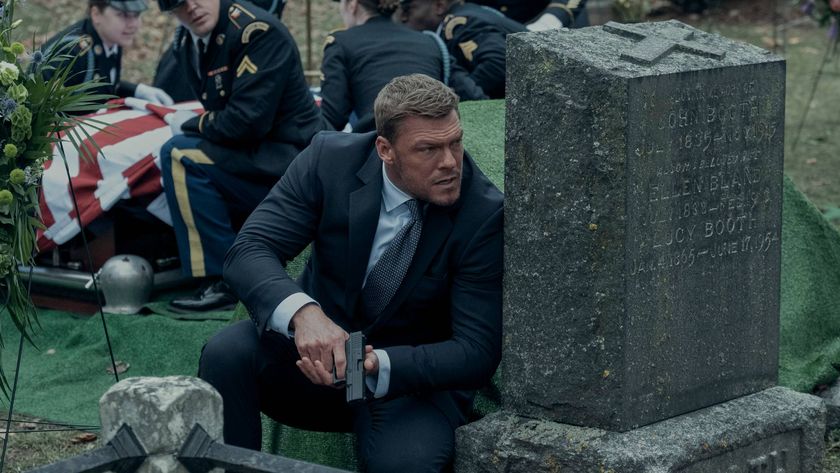Dark Souls 3: the necessary end of an era, but an epic send-off
The Dark Souls series is defined by masterful craft and keen attention to detail - you know, stuff that takes time. Just look how many butt-eyes Chaos Witch Quelaag has. But with (soon to be) three games in three years, From Software’s output is starting to seem excessive.
Don’t get me wrong. I come away from Dark Souls 3’s behind-closed-doors E3 unveiling thoroughly impressed, but for the first time, not astounded. That’s why I was relieved when the studio’s president Hidetaka Miyazaki revealed that this game signals the end of Dark Souls in its current incarnation. It’s not going away, it’s just kindling the bonfire and setting the stage for something brighter and bolder. Make no mistake, though: their latest looks like an epic send off.

Our demo begins with a reassuringly bleak scene: ash-filled sky dyed ember yellow, sprawling castle stretching to the horizon, and a badass knight standing sentry over it all. The game is new-gen-only, and this shows in the billowing tatters of his torn cape and the dirt-speckled sheen of his iron helm. In both scale and detail, Dark Souls 3 ups the ante. The timeframe of its development overlapped with that of Bloodborne by a year, with only Miyazaki and a smattering of personnel working on both. This explains why the game looks anything but rushed.
On the Wall of Lodeleth, Miyazaki is controlling our hero as he passes a long-dead dragon seemingly turned to stone. Is it the area’s former guardian? An unwanted invader? Its inactivity chimes with suggestion that Dark Souls 3 is set after the apocalypse and follows the mysterious Lord of Cinder in a doomsday world. That world feels even deader than usual.
He heads into a dark room and lights a torch (there are no timers on torches anymore, yay). Descending a set of stairs, Miyazaki comes to an intriguing gravestone, and upon offering a flame, a message pops up: “Grave of a nameless retainer raised his sword for the Lord of Cinder.” Yeah, don’t ask me. I’m told players are able to leave epitaphs and learn more about the world, but honestly I’m not completely sure what this means in practice. Wiki writers, start your engines.

Combat offers more concrete details. After Bloodborne’s kinetic aggression, it’s back to the more methodical sword-and-board, but new moves help it feel fresh. Each weapon has a ‘ready stance’; from a double-handed position, using the straight sword’s special move sees you lean back before powerfully thrusting an opponent's defense. Dual-wielding scimitars, meanwhile, allows for a devastating pirouette that can scythe down groups. While the fundamental mechanics are the same, more strikes offer more options.
Thing is, enemies can use all the same attacks you can. An eight foot knight emerges from a tower with a greatsword, and after a brief crouch, launches us high into the air. And among admittedly familiar bone dogs, undead archers, and dagger-swiping monks, we encounter one unexpected foe - an ordinary bandit who suddenly explodes into a writhing tangle of slick, black, flailing tentacles. It’s almost indescribable, if you’ll permit me to use a Lovecraftian cop out.
Sign up to the GamesRadar+ Newsletter
Weekly digests, tales from the communities you love, and more
I’m coming to the end of the demo, and there’s nothing yet that’s surprised me. Sure, I laughed when Miyazaki praised the sun. I clapped when a fire-breathing drake dowsed a rampart in flames. But there’s little in the way of new: our character is fighting enemies we’ve seen before with weapons we’ve used already (greatsword, straight sword, scimitar, short bow), in a better-looking but ultimately similar fantasy setting.

One highlight remains, though, and that’s the boss battle against the unsettling Dancer of the Frigid Valley. Spindly-limbed, and with what looks like a bridal veil made from ash, she slinks from a church ceiling carrying a flaming sword, unpredictable pirouettes and tricksy swirls making her particularly hard to read. Interestingly, as the fight continues, the fire spreads, though it’s not certain whether this imposes a time limit on the battle or is simply a backdrop.
And that concludes the show. Of course I’m going to play the game on the day of release. It’s Dark Souls. But there’s something missing this third - or if you include Demon’s Souls and Bloodborne, fifth - time around. Perhaps I’m being too hasty. After all, this series is about delving into the unknown, about unearthing and conquering a disturbing world largely on your lonesome, and this makes it a hard game to demo in a hot, sweaty, people-packed room. And besides, it was the first look - From Software is hardly about to spill all the secrets.
Miyazaki has said this game marks a “turning point.” I’m interested in how Dark Souls 3 will bridge the gap between the classic and the new, introducing conservative, iterative change while paving the way for the future. As long as they take their time and continue to put as many eyeballs on as many things as possible, I’m happy.













Dark Souls Remastered seamless co-op is officially coming from the creator behind the same Elden Ring mod, and it's set to include everything from PvP to scaling

There's a whole world of Dark Souls-style lore hidden in this series of dress-up games, and I bet you can't tell which is which




